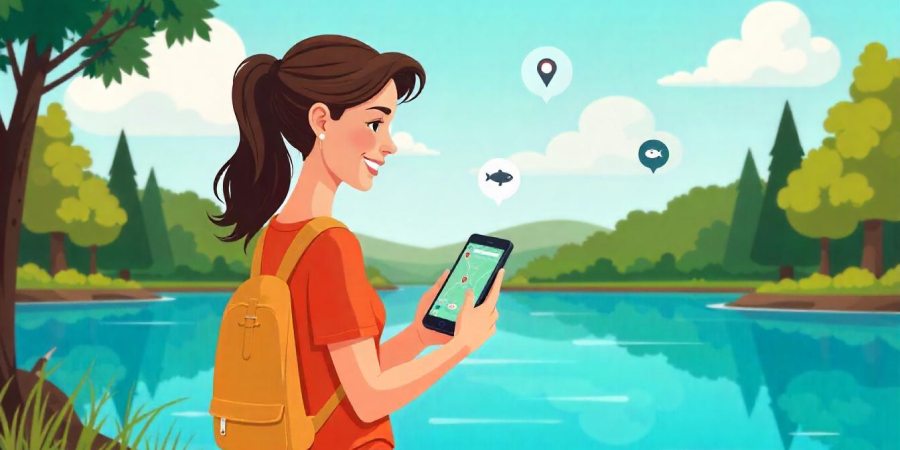
Autonomous AI Agent Development: Building the Future...
In today’s world of rapidly evolving technologies, autonomous AI age...

Fishing is no longer just a relaxing weekend activity — it’s a lifestyle, a competitive sport, and for many, a livelihood. With over 55 million anglers in the United States alone, the fishing industry is booming — and tech has cast its line right into it. Fishing spot finder apps are quickly becoming essential tools for both recreational and professional fishers, offering everything from real-time water conditions to shared community hotspots.
If you’re planning to build a fishing spot finder app, you’re not just entering an untapped niche — you’re entering a passionate, loyal, and growing user base. This blog post will guide you through the full development cycle — from idea to launch — and show you how to build an app that hooks users and reels in revenue.
Fishing apps are no longer limited to basic maps or tide charts. Today’s top fishing apps — like Fishbrain, ANGLR, and Navionics — combine data, community, and personalization to deliver massive value. Here’s why investing in this market is smart:
A successful app isn’t just about showing dots on a map. Let’s look at core features that your app must include to stand out:
Fishing success depends heavily on environmental conditions. Integrate:
APIs to consider: OpenWeatherMap, Tides & Currents, and Weatherstack.
Build an angler social network:
This builds engagement and gives your app viral potential.
To outshine competitors, add premium, high-tech tools that feel made for seasoned anglers:
Here’s a detailed breakdown of the development timeline and process:
Frontend: Flutter (cross-platform), or Swift/Java for native apps
Backend: Node.js + Express or Django for APIs
Database: Firebase (real-time) or PostgreSQL
Hosting: AWS / Google Cloud
APIs: Google Maps, OpenWeatherMap, Solunar API
An app is only as strong as its revenue model. Here’s how to turn users into dollars:
| Challenge | Solution |
|---|---|
| Data Accuracy | Use a mix of verified user content + admin moderation |
| Low Retention | Gamify progress with badges, leaderboards |
| Battery Drain | Optimize GPS and map calls to run in background only when active |
| Offline Access | Cache maps and last known spots locally |
Apps like Fishbrain boast 15M+ users. Why? Because they focused on community, data, and ease of use. Their success shows there’s room for niche competitors who innovate.
What could you do differently?
A fishing spot finder app helps anglers discover, mark, and navigate to fishing locations while offering tools like weather data, catch logs, and social sharing.
Expect to invest $30,000–$100,000 depending on features, platform support, and design complexity.
Yes — freemium models, subscriptions, and affiliate gear recommendations work beautifully in this niche.
Cross-platform (Flutter or React Native) helps reduce costs and reach both iOS and Android users at once.
Community-driven data, smart alerts, gamification (badges, streaks), and helpful tools keep users coming back and telling friends.
Send seasonal tips, new spot suggestions, organize monthly challenges, and partner with fishing events or tournaments.
Fishing spot finder app development isn’t just a project — it’s a chance to create something anglers depend on. With a blend of smart tech, useful features, and a tight-knit community, your app can become the go-to companion for fishers everywhere.
The market is open, the users are loyal, and the possibilities are vast. Cast your line — and let’s build the next big fishing tech success.